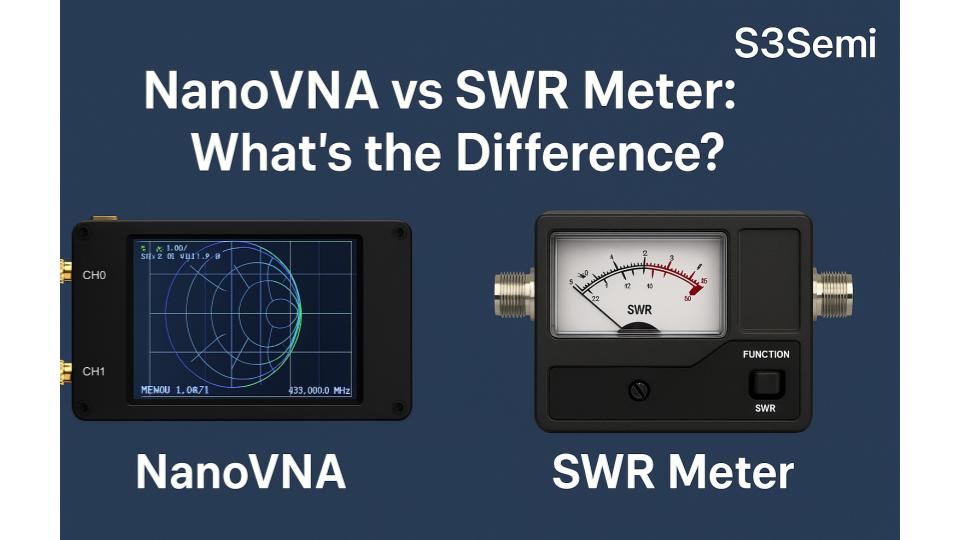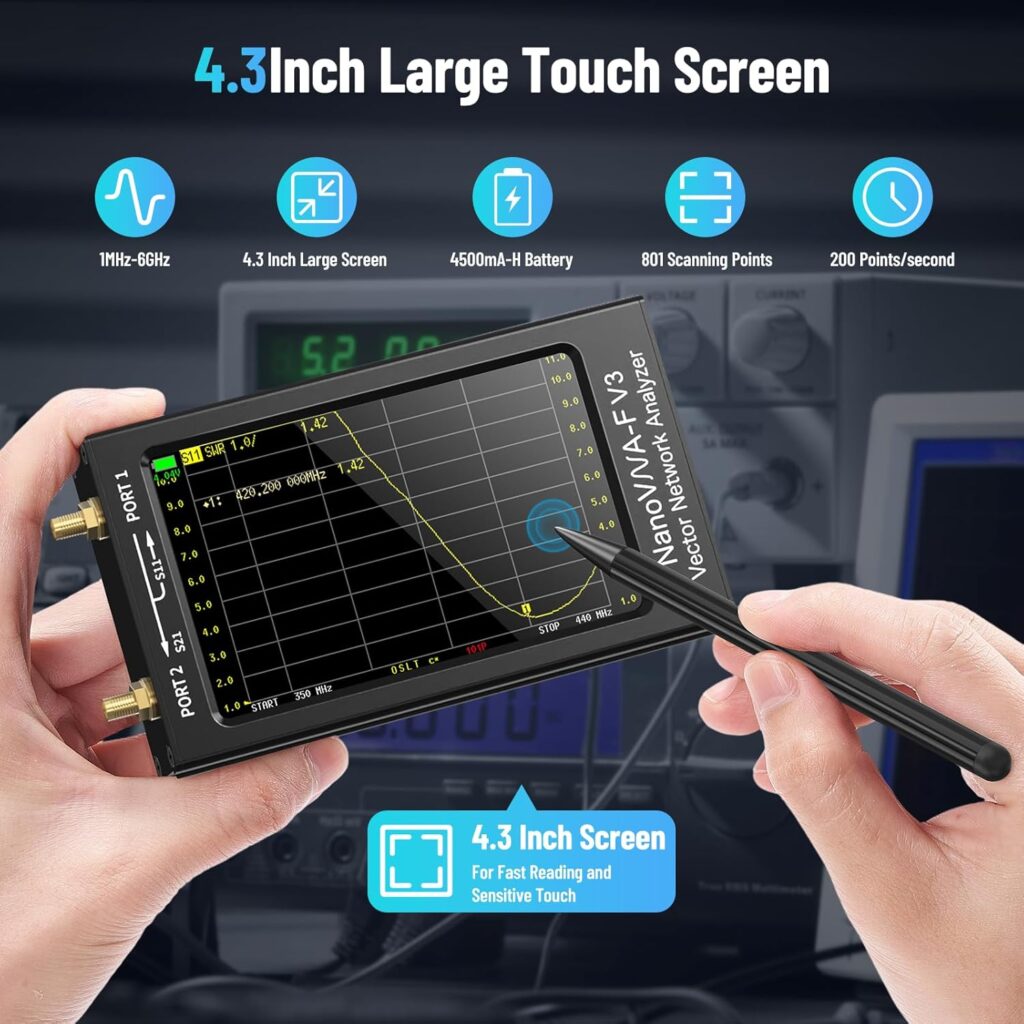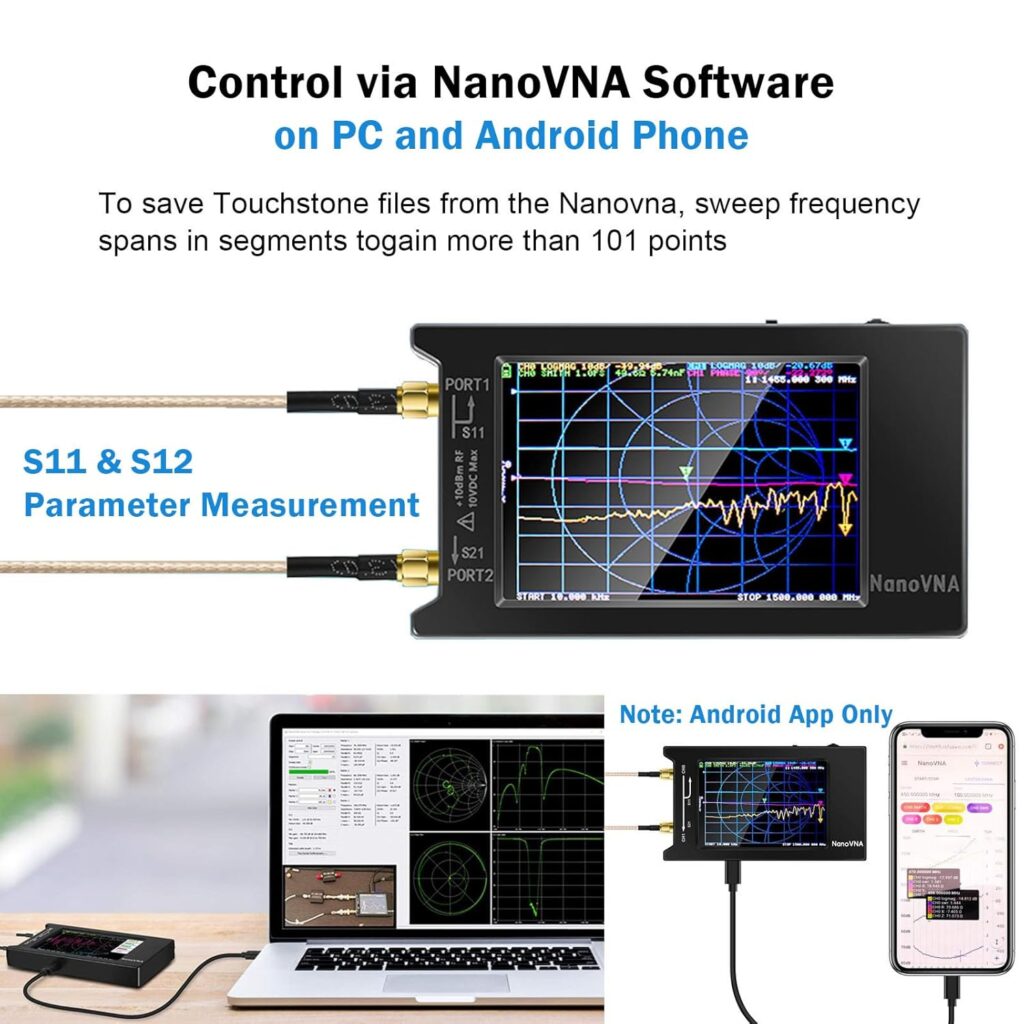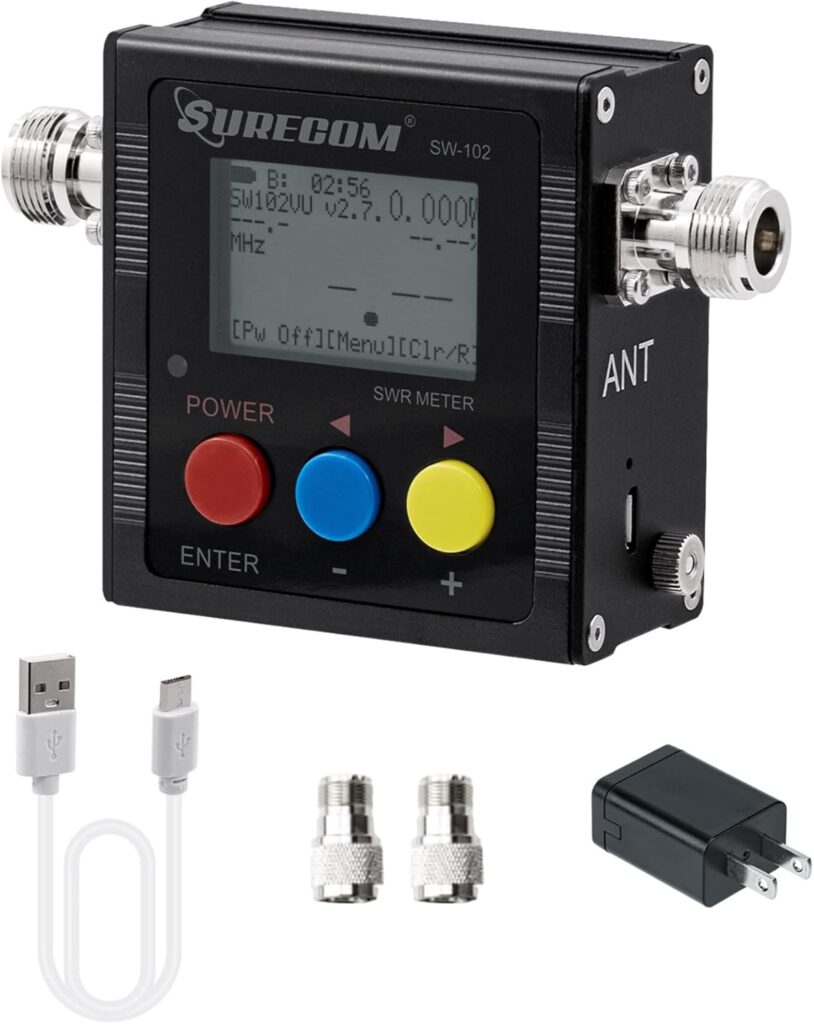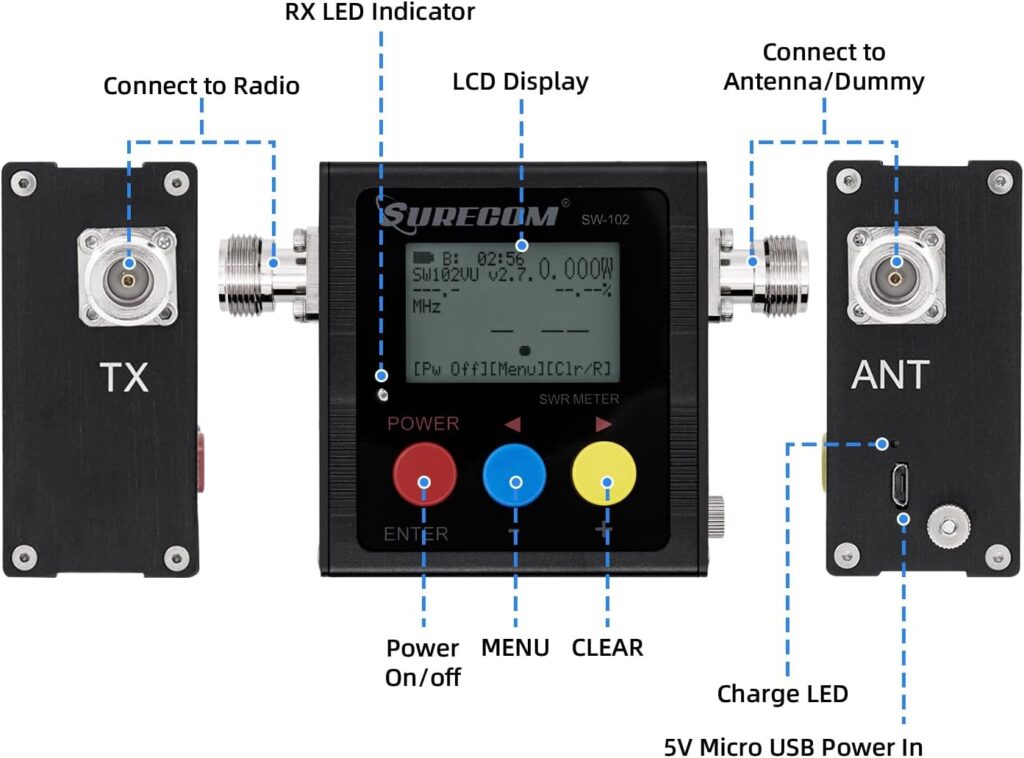When tuning antennas or checking your RF setup, you’ll come across two popular tools – the NanoVNA and the SWR meter. Both measure how well your antenna and transmission line are matched, but they do it in very different ways.
👉 Check the 6 GHz NanoVNA on Amazon
If you’ve ever wondered which one is better for your needs, this guide will explain what each does, how they differ, and when to use one over the other.
⚙️ Overview
- NanoVNA (Vector Network Analyzer) is a digital, multi-function RF analyzer. It measures S-parameters (S11, S21), showing you reflection, transmission, impedance, and SWR – all with detailed visual graphs.
- SWR Meter (Standing Wave Ratio Meter) is a simpler, analog or digital instrument. It shows the SWR value only, telling you how efficiently power is being transmitted from your radio to your antenna.
In simple terms:
👉 The NanoVNA shows you everything about your RF system.
👉 The SWR meter shows you one thing – how well it’s matched.
🔍 Key Specification Comparison
| Feature | NanoVNA | SWR Meter |
|---|---|---|
| Function | Measures reflection (S11), transmission (S21), impedance, phase, and SWR | Measures SWR only |
| Frequency Range | 50 kHz – 1.5 GHz (up to 3 GHz for some versions) | Depends on model (typically 1.8 – 30 MHz or 144 – 450 MHz) |
| Display | Built-in color screen (2.8″–4.3″) with Smith chart and graphs | Analog needle or digital numeric display |
| Measurement Type | Vector measurement (amplitude + phase) | Scalar measurement (amplitude only) |
| Calibration | SOLT (Short, Open, Load, Through) calibration | Usually factory-calibrated or manually adjusted |
| Data Output | USB connection, software like NanoVNA Saver | None (stand-alone use) |
| Accuracy | High – shows return loss, impedance, and SWR curves | Moderate – SWR only |
| Use Cases | Antenna tuning, cable testing, filter design, impedance matching | Quick SWR checks for radio operators |
| 💳 Price Range (2025) | 💲 Check Price | 💲 Check Price |
| Power Supply | Rechargeable via USB | Powered by RF from transmitter or external DC |
| Portability | Compact handheld | Compact handheld |
⚙️ How They Work
🔹 NanoVNA
A NanoVNA sends a known signal into your antenna or circuit and measures both the reflected and transmitted waves. It then calculates complex parameters such as:
- SWR (Standing Wave Ratio)
- Return Loss
- Impedance (Z)
- Phase and magnitude
You can visualize these results as Smith charts, return loss plots, or SWR vs frequency curves — making it a powerful diagnostic tool.
✅ Pros:
- Comprehensive view of your system
- Accurate over a wide frequency range
- Ideal for antenna tuning, filter measurement, and cable testing
⚠️ Cons:
- Slight learning curve
- Requires calibration for accuracy
🔹 SWR Meter
An SWR meter measures how much power from your transmitter is reflected back from the antenna. It provides a simple numerical or needle reading of SWR (e.g., 1.2:1, 2:1).
If your SWR is close to 1:1, your antenna is well matched. Higher SWR means energy is being reflected, reducing performance and potentially damaging your transmitter.
✅ Pros:
- Simple, quick, and inexpensive
- Great for ham and CB radio use
- No calibration or computer needed
⚠️ Cons:
- No impedance or frequency graph
- Only works at transmit power (you can’t measure without a signal source)
- Limited frequency coverage
🧩 Practical Example
Imagine you’re tuning a 2-meter ham antenna (around 144–148 MHz):
- With a SWR meter, you can transmit on your radio and see that your SWR is 2:1. You know there’s a mismatch but not what’s causing it.
- With a NanoVNA, you can see the exact frequency where the antenna resonates, its impedance (e.g., 42 +j5 Ω), and how the SWR changes across the entire band.
That level of detail helps you adjust element lengths, matching networks, or feedlines more precisely.
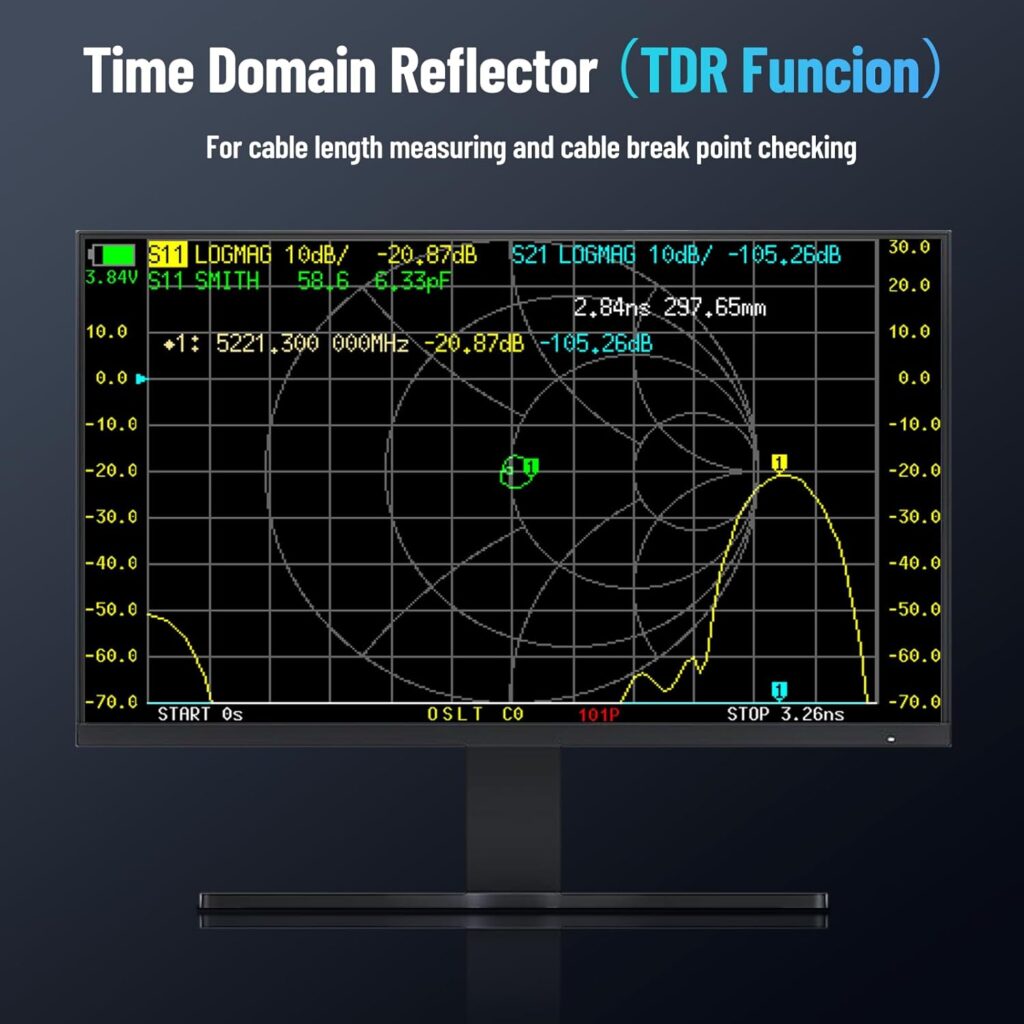
🧭 Which One Should You Choose?
| If you want to… | Get this |
|---|---|
| Quickly check SWR on your ham or CB radio | SWR Meter |
| Tune antennas across frequency bands | NanoVNA |
| Design or measure filters and cables | NanoVNA |
| Perform field radio checks with minimal gear | SWR Meter |
| Learn RF fundamentals or visualize impedance | NanoVNA |
💡 Pro Tip: Use Both Together
Many radio enthusiasts use both tools. The NanoVNA for detailed tuning and system design, and the SWR meter for quick on-air checks.
Think of it this way:
- The NanoVNA is your lab instrument.
- The SWR meter is your field companion.
🔧 Final Thoughts
Both the NanoVNA and SWR meter help you understand your antenna’s performance – they just do it differently.
- The NanoVNA gives you deep insight into frequency response, impedance, and phase.
- The SWR meter gives you a fast, simple indication of match quality.
If you’re a serious RF enthusiast, antenna builder, or experimenter, the NanoVNA is an incredible value. If you just need a quick SWR check before transmitting, an SWR meter is all you need.
Together, they make a perfect pair for any RF workbench or field kit.

